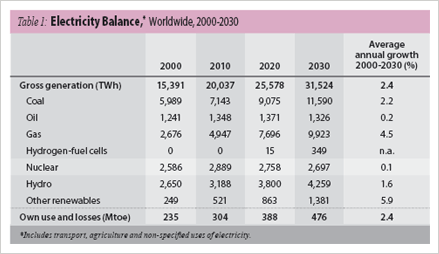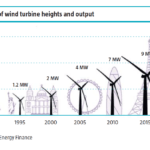ETFs and individual stocks are two ways to gain gain exposure to foreign utilities. However ETFs may not be necessarily the best way in foreign utilities. In this post lets why individual stocks may be better than going with the ETFs available in the market.
The three ETFs available to invest in foreign utilities are:
- iShares S&P Global Utilities Sector Index Fund (JXI)
- WisdomTree International Utilities Sector Fund (DBU)
- SPDR S&P International Utilities Sector Fund (IPU)
The SPDR S&P International Utilities Sector Fund has a small asset base of just $8.5 M. Hence I have left out this fund from the analysis.
The Top 10 holdings of the iShares and WisdomTree funds are listed below with the current dividend yields of their US-listed depository receipts:
a) iShares S&P Global Utilities Sector Index Fund (JXI)
[TABLE=699]
b) WisdomTree International Utilities Sector Fund (DBU)
[TABLE=698]
The iShares ETF is the largest of the funds with total assets of $254M and an expense ratio of 0.48%. This fund tracks the S&P Global Utilities Index. The U.S. accounts for about 40% of the portfolio. So the disadvantage with this fund is that it does not invest purely in foreign utilities. The 30-day SEC Yield is 3.81%.In terms of performance, JXI is down 3.49% as of September end, 2010. The annual total returns for 2007, 2008 and 2009 were 22.49%, -30.39% and 8.38% respectively. The table above shows that 8 out of the 10 holdings in the portfolio have dividend yields higher than the 30-day SEC yield.Foreign stocks generally have high dividend yields than ETFs.
The WisdomTree ETF has total assets of $37M and the expense ratio is 0.58%. The 30-day SEC Yield is 4.18%. This fund can be considered as a purely foreign focused fund since U.S. utilities for just about 1% of the total portfolio. France, Germany, UK, Italy and Spain account for more than 60% of the allocation. Similar to the iShares fund, 8 out of the 10 holdings have yields higher than the 30-day SEC yield. The annual total returns for 2007, 2008 and 2009 were 23.28%, -29.24% and 1.26% respectively. YTD the share price is down about 4%.
In addition to dividend yield factor, despite having “global” and “international” in their names, the two ETFs do not offer exposure to emerging market utilities.Due to rising economic growth, power consumption in many emerging markets such as China, India, Brazil, etc. is growing exponentially.The iShares fund has about 1% of the fund allocated to the emerging market of Chile but that is a tiny portion of the emerging market universe. The WisdomTree fund is entirely devoted to dividend-paying utility firms in the developed markets outside of the U.S. and Canada. Because these ETFs do not invest in emerging market utilities they miss out on the great growth occurring in emerging markets. For example, the demand for electricity in Brazil is growing twice as fast as the U.S. India has the chronic problem of meeting its electricity demand. Recently the government there has embarked a on a program to drastically raise electricity output.
From an IAEA article on global electricity market trends:
“World electricity demand is projected to double between 2000 and 2030, growing at an annual rate of 2.4% (see Table 1). This is faster than any other final energy source. Electricity’s share of total final energy consumption rises from 18% in 2000 to 22% in 2030. Electricity demand growth is strongest in developing countries, where demand will climb by over 4% per year over the projection period, more than tripling by 2030. Consequently, the developing countries’ share of global electricity demand jumps from 27% in 2000 to 43% in 2030.”
Many emerging market utility stocks offer excellent dividends and potential for capital appreciation. Brazilian electric utility Cemig (CIG), which is majority-owned by the Brazilian government, has a 4.75% dividend yield. Some of the other emerging market electric utilities with high dividend yields include CPFL Energia (CPL) with 7.88%, Aes Tiete SA (AESAY) with 10.11%, Empresa Nacional de Electricidad SA (EOC) with 3.41% and Huaneng Power International (HNP) with 5.51%.
To be sure ETFs do have their own advantages such as offering a simple and easy way to invest in foreign markets and achieve diversification. However that may not be the case in all ETFs. Also while investing in individual stocks can yield much higher returns than ETFs they may not be suitable for all investors as some of the stocks can be highly volatile especially those from emerging markets. Despite high yields, many EM utility stocks do not pay dividends consistently. However that is changing slowly as these firms try to attract more international capital and try to pay regular dividends.


